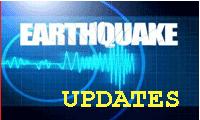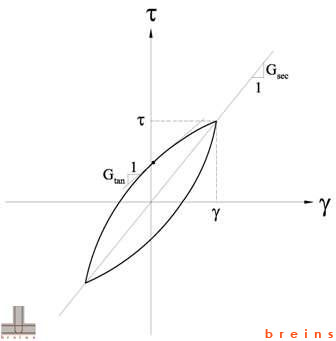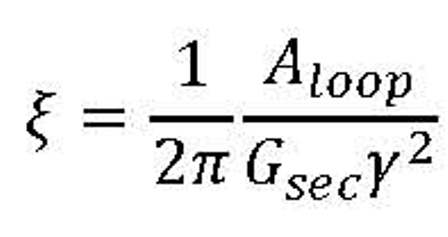
Today (NST)
Friday, Apr 25, 2025
Smart Search
Please post in your Technical Queries, Comments & Suggestions to Contact us......
Advertisement

For Advertisement
|
|
| Subscribe to BREINS Sci-Tech |
| Visit this group |

Geotechnical Investigation
Dynamic Behavior of Soil
Study of dynamic properties of soil becomes essential for predicting the behavior of foundation during an earthquake in terms of earthquake resistant design. Soil properties primarily depend upon level of strain induced under the application of cyclic loading.
At low strain soil behaves linearly whereas it behaves in a nonlinear manner at the higher strain. Laboratory soil tests for dynamic soil properties developed in the past three decades disclosed that soils change from a linear to nonlinear material as induced shear strain grows from 10-6 to 10-3 and finally reach failures at a strain larger than 10-2.
Equivalent Linear Model of Soil
Up to the strain level of 10-3, beyond which nonlinear behavior becomes prominent, soil is often simplified as a linear mass. An approximate analysis is carried out on soil applying "Equivalent Linear Model" (Fig-3). A linear model expresses dynamic properties of soil that are independent of the strain amplitude. It is generally useful for low strain levels.
A hysteresis loop of a soil mass subjected to symmetric cyclic loading is proposed as shown in (Fig-3) below.

Fig-3 (Equivalent linear model of soil with Secant shear modulus Gsec & Tangent shear modulus Gtan)
This hysteresis loop can be described in two ways: first, by the actual path of the loop itself, and second, by parameters that describe its general shape. The two important properties of the shape of a hysteresis loop are its inclination and its width. The inclination of the loop depends on the stiffness of soil, which can be described at any point during the loading process by the tangent shear modulus Gtan, that varies throughout the loading. Tangent modulus Gtan varies throughout the cycle of loading, but its average value over the entire loop can be approximated by the secant shear modulus as,
![]()
where, ![]() and
and ![]() are the
shear stress and shear strain amplitudes. Thus Gsec describes
the general inclination of the hysteresis loop. The width of the hysteresis
loop is related to the loop area which is infact a measure of energy
dissipation that can be conveniently described by the damping ratio
as,
are the
shear stress and shear strain amplitudes. Thus Gsec describes
the general inclination of the hysteresis loop. The width of the hysteresis
loop is related to the loop area which is infact a measure of energy
dissipation that can be conveniently described by the damping ratio
as,

where Aloop is the area under the hysteresis
loop. The parameters Gsec and ![]() are
called equivalent linear soil parameters.
are
called equivalent linear soil parameters.
As most commonly used methods of ground response analysis
are based on this "Equivalent linear model", considerable
effort has been made in the characterization of Gsec and ![]() for different soil types. Equivalent linear model implies that strain
will always returns to zero after cyclic loading and failure cannot
occur. This method hence cannot be used in the problems involving permanent
deformation and failure.
for different soil types. Equivalent linear model implies that strain
will always returns to zero after cyclic loading and failure cannot
occur. This method hence cannot be used in the problems involving permanent
deformation and failure.